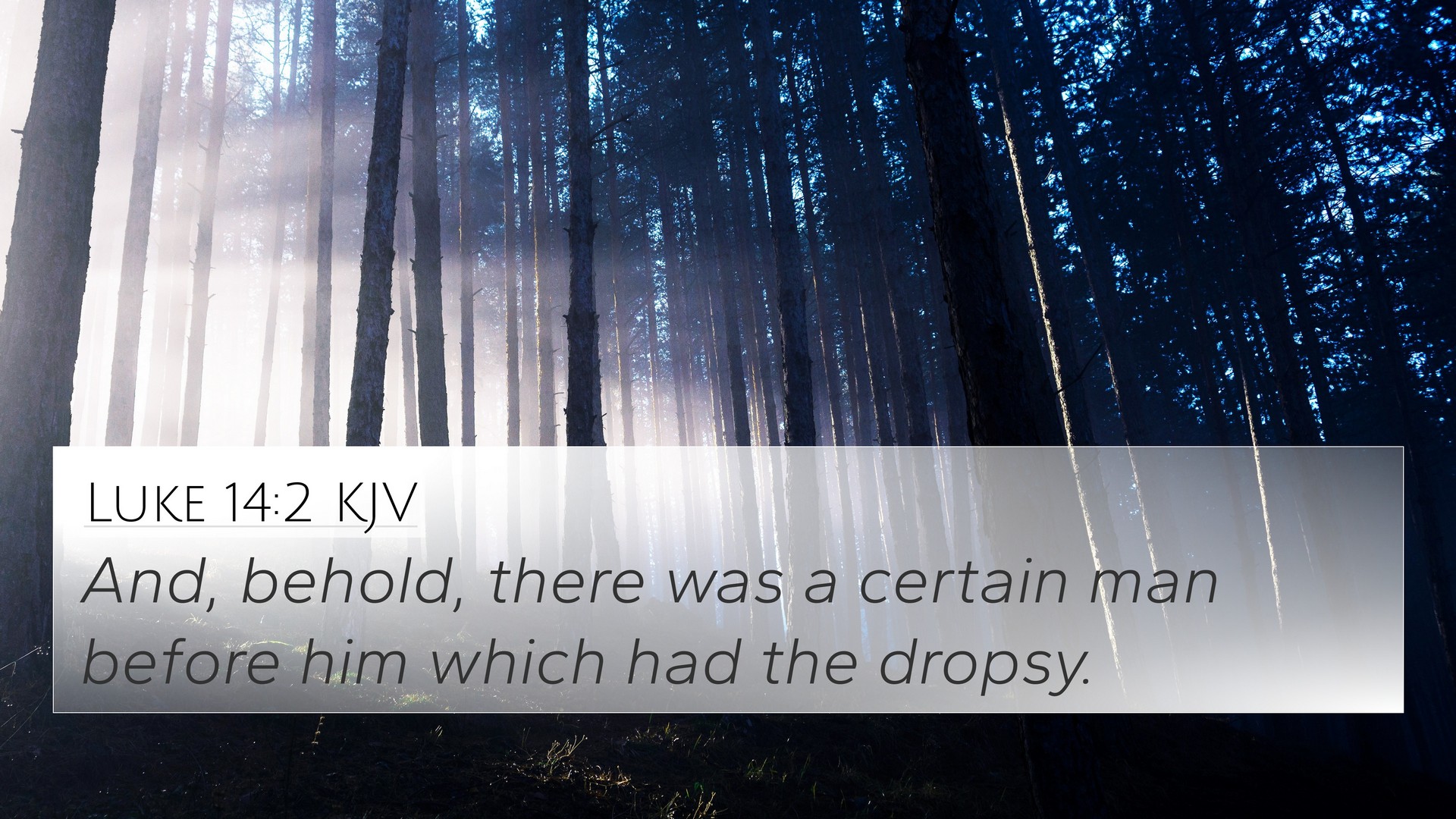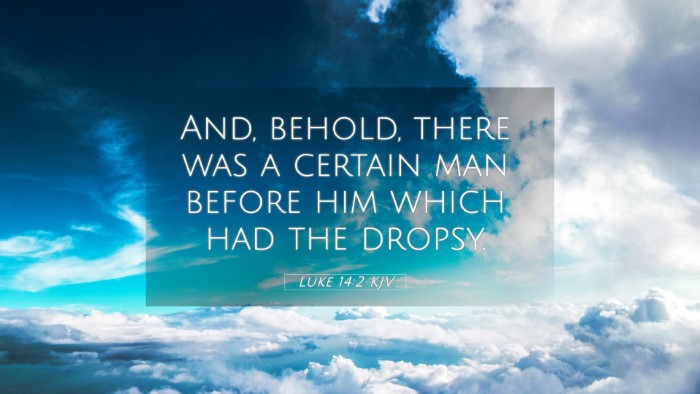Understanding Luke 14:2
Verse: "And, behold, there was a certain man before him which had the dropsy." (Luke 14:2, KJV)
Summarized Meaning and Interpretation
The verse in Luke 14:2 serves as a crucial narrative setup that illustrates Jesus’ interaction with societal norms and religious expectations of His time. The man suffering from dropsy, a condition characterized by the excess accumulation of fluid in the body's tissues, represents those marginalized and in need of compassion.
Contextual Insights
- Highlighting Compassion: Jesus often highlighted the importance of compassion over strict adherence to the law. This man’s presence at the gathering sets the stage for Jesus to challenge the Pharisees' understanding of the Sabbath and divine mercy.
- Social Commentary: Jesus’ action in healing on the Sabbath directly confronts the legalistic mindset of the Pharisees, illustrating a critical dialogue between mercy and ritual observance.
- Types of Affliction: Dropsy, being a somewhat visible ailment, may indicate the societal stigma associated with ailments, further emphasizing Jesus’s role in redeeming those considered ‘less than’ by society.
Cross-References and Thematic Connections
Luke 14:2 connects richly with various other biblical passages. Here are 10 significant cross-references that provide further insight and context:
- Matthew 12:10-12: Jesus speaks of doing good on the Sabbath, showing the utility of mercy over sacrifice.
- John 5:1-9: The healing at the pool of Bethesda presents Jesus showcasing His power and compassion towards the sick.
- Luke 13:10-17: Another healing on the Sabbath, where Jesus rebukes religious leaders for their hypocrisy.
- Mark 2:27: “The Sabbath was made for man, not man for the Sabbath,” highlighting the purpose of the Sabbath in terms of human need.
- Matthew 9:36: Jesus feeling compassion for the crowds, underlining His heart for the broken and afflicted.
- Isaiah 58:6-7: God's desire for the true observance of the Sabbath connected to acts of kindness and justice.
- Luke 4:18: Jesus describes His mission to heal and proclaim good news to the poor and afflicted.
- Philippians 2:4: A call to look out for the interests of others, mirroring the compassion Jesus exhibited.
- Matthew 25:34-40: In serving the least, we ultimately serve Christ, aligning closely with Jesus’ care for the ill.
- 1 Peter 3:8: Encouragement to show sympathy, reflecting the heart of Christ in everyday life.
Thematic Bible Verse Connections
The story encapsulated in Luke 14:2 serves as a cornerstone for numerous themes within Scripture that underline the compassion of Christ and the transformative power of grace. Here are key themes reinforced through this verse:
- Divine Compassion: Jesus’ willingness to heal the afflicted highlights a prevailing theme of God's love and mercy towards the suffering.
- Challenge to Legalism: Jesus constantly confronts legalistic interpretations of the law, advocating for a heart-oriented faith over ritualistic compliance.
- Community and Belonging: The gatherings Jesus partakes in often include those on the margins, emphasizing the inclusivity of the Kingdom of God.
- Sabbath Rest and Mercy: The Sabbath becomes a symbol of freedom and healing rather than restriction, transforming understanding on rest in God.
- Faith and Healing: The act of healing showcases that faith can lead to restoration, linking physical ailments to spiritual truths.
Conclusion
In summary, Luke 14:2 is not merely a narrative but a profound reflection of Jesus' ministry focused on compassion, mercy, and a radical approach to religious observance. Through the connections established by cross-referencing this verse with others, we can deeply appreciate the thematic consistency throughout Scripture. Each verse beckons us to reflect on our own understanding of compassion, inclusivity, and the essence of true faith.


